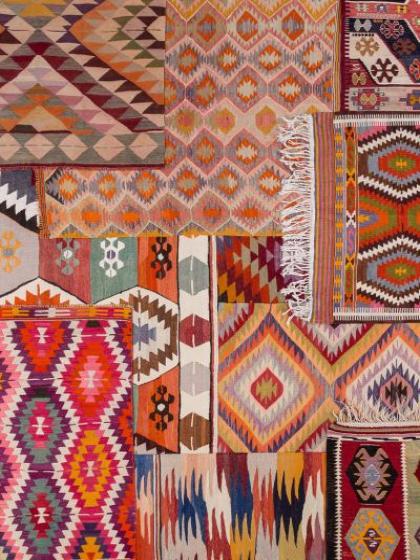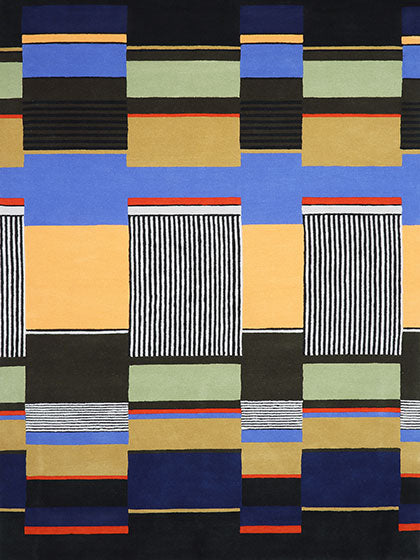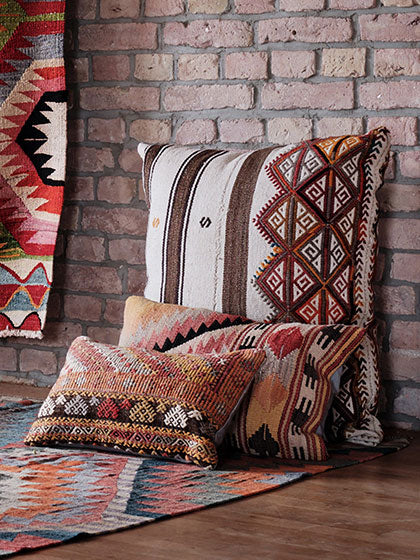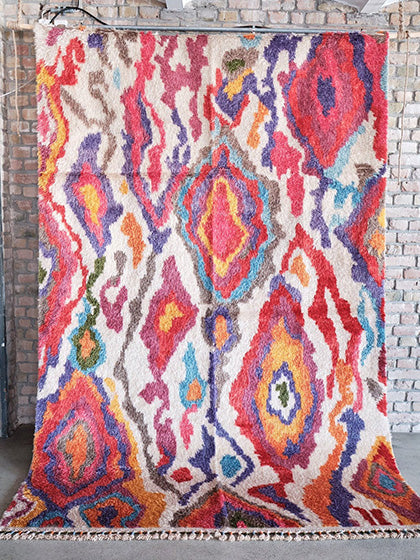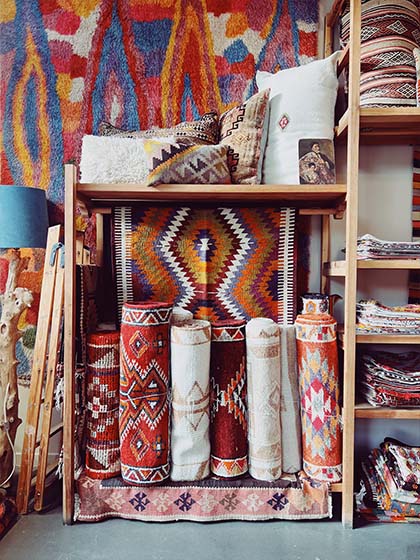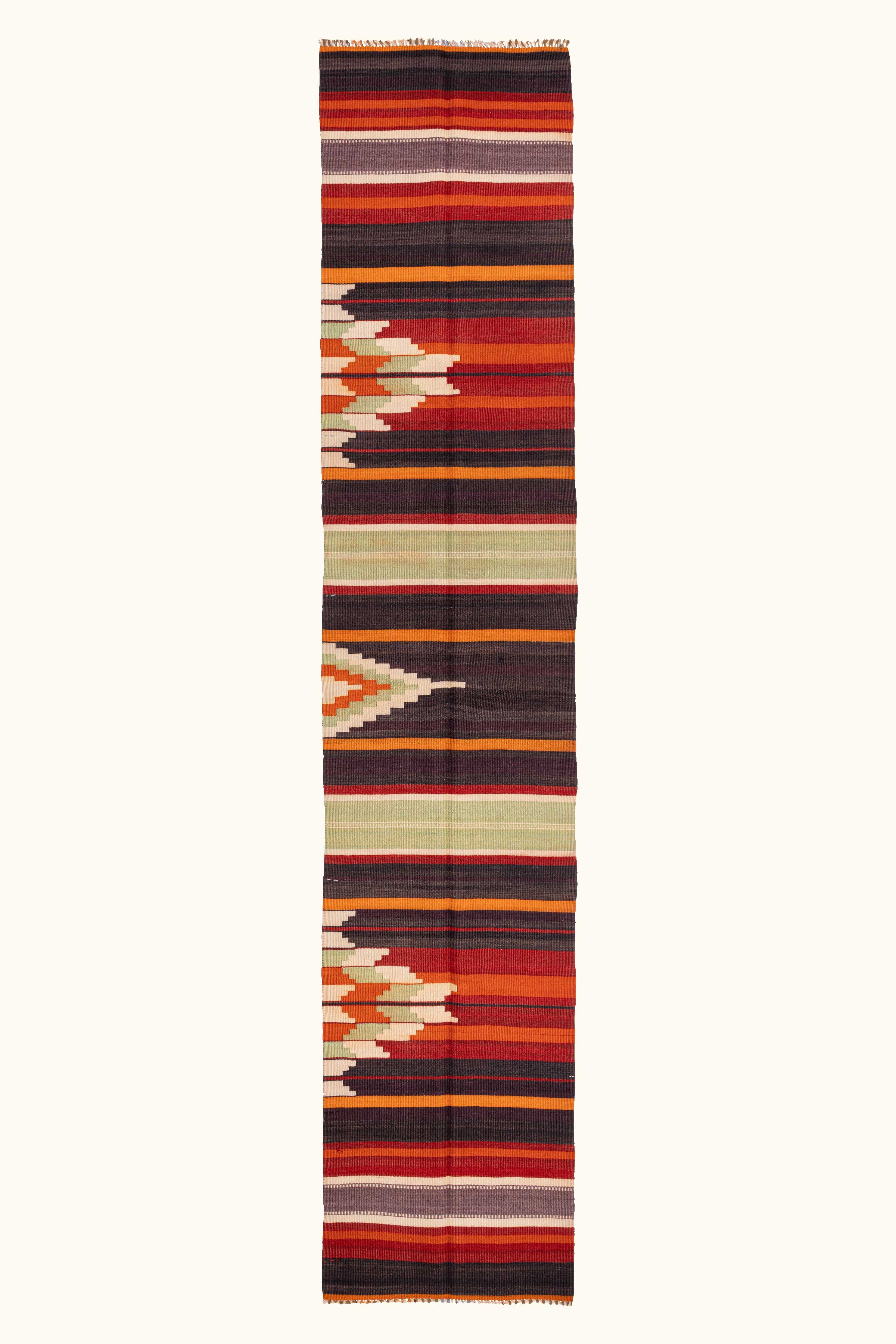
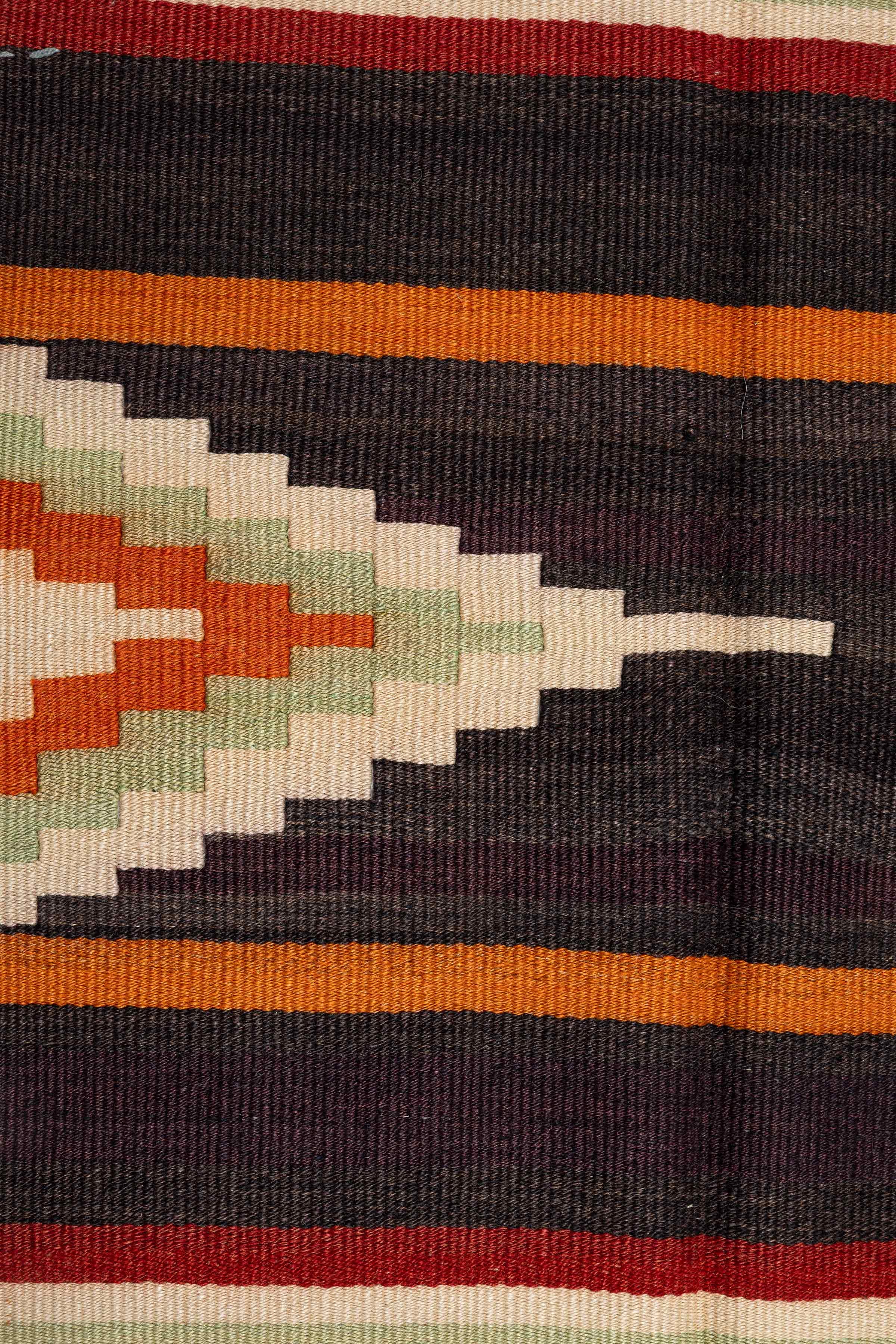
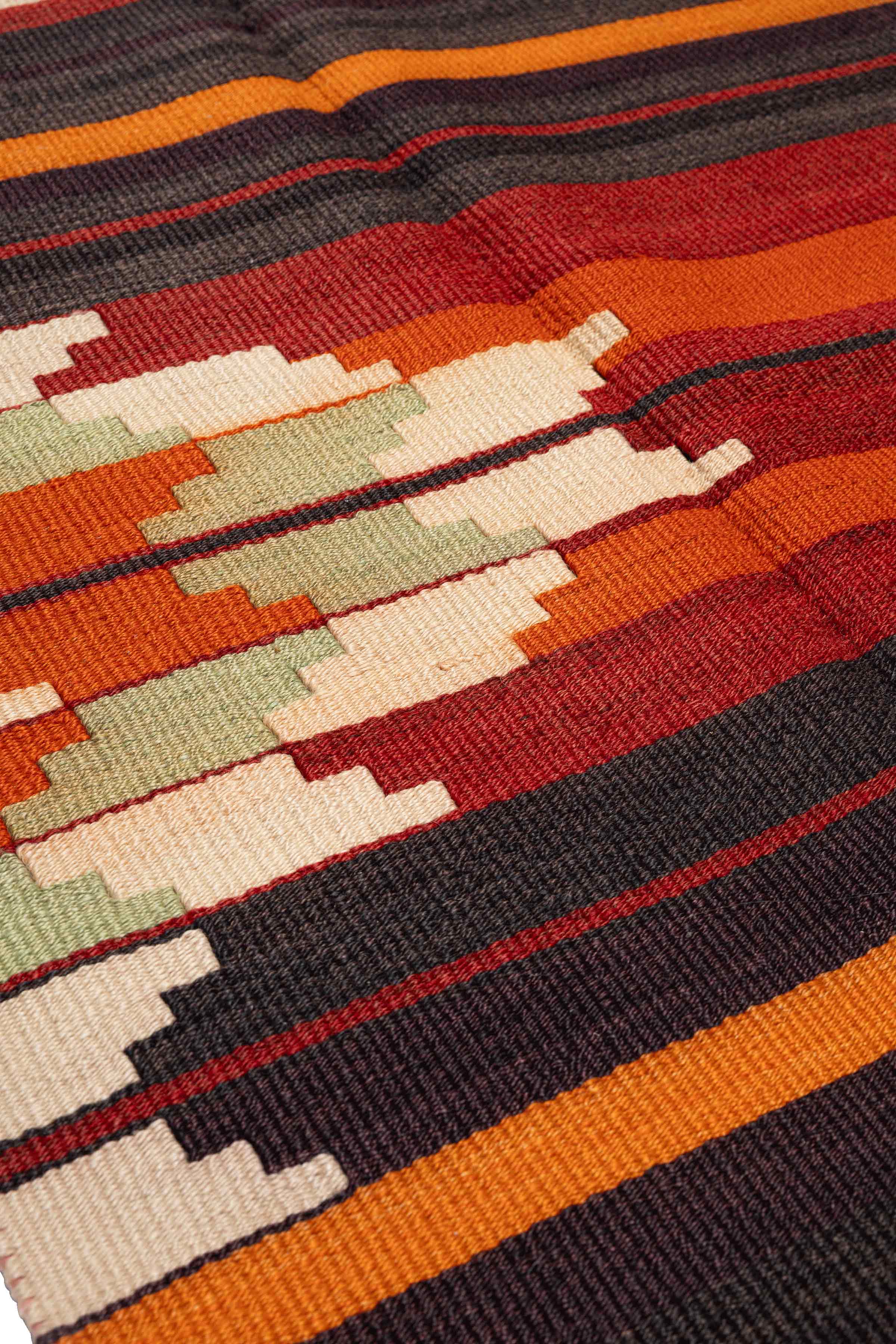
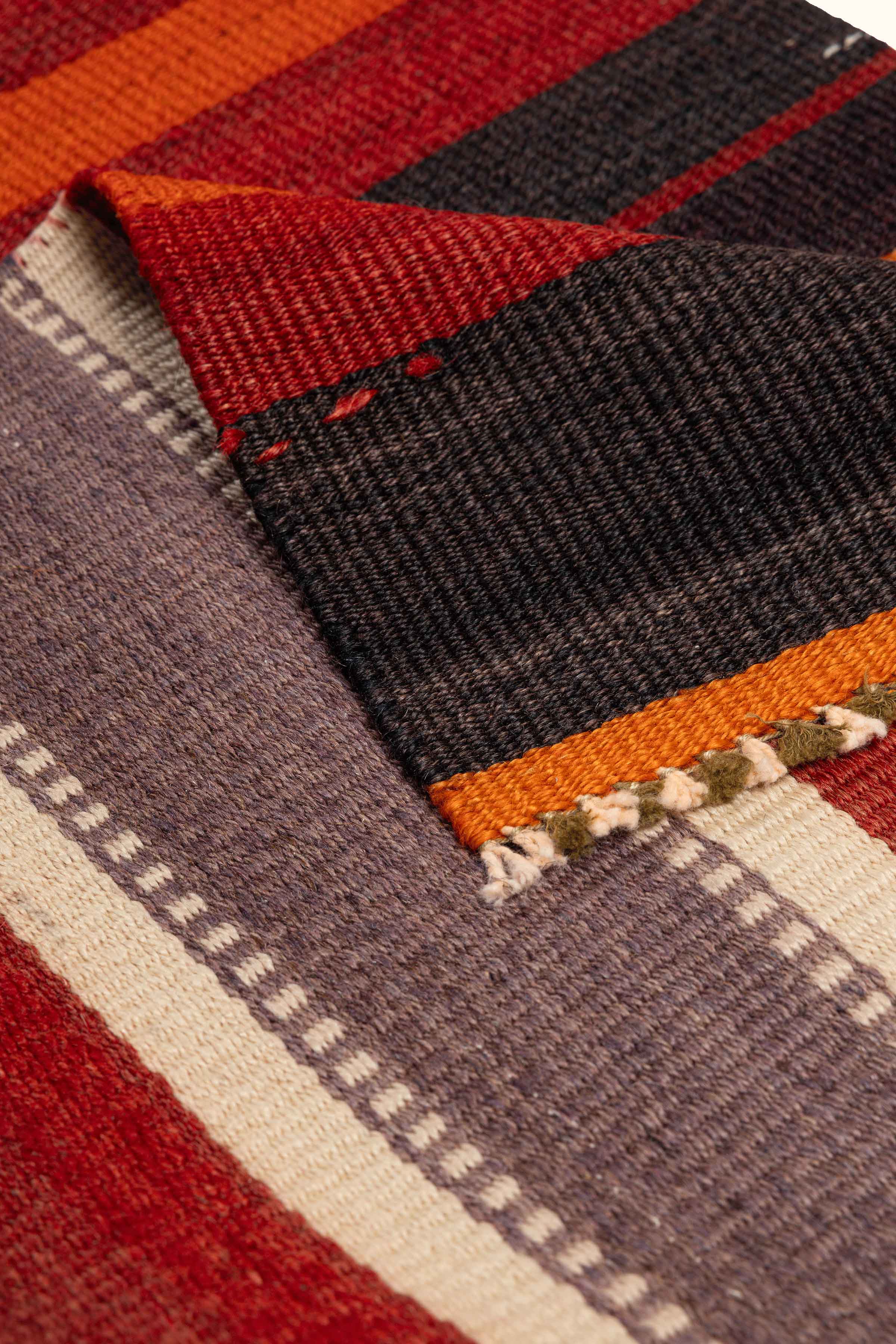
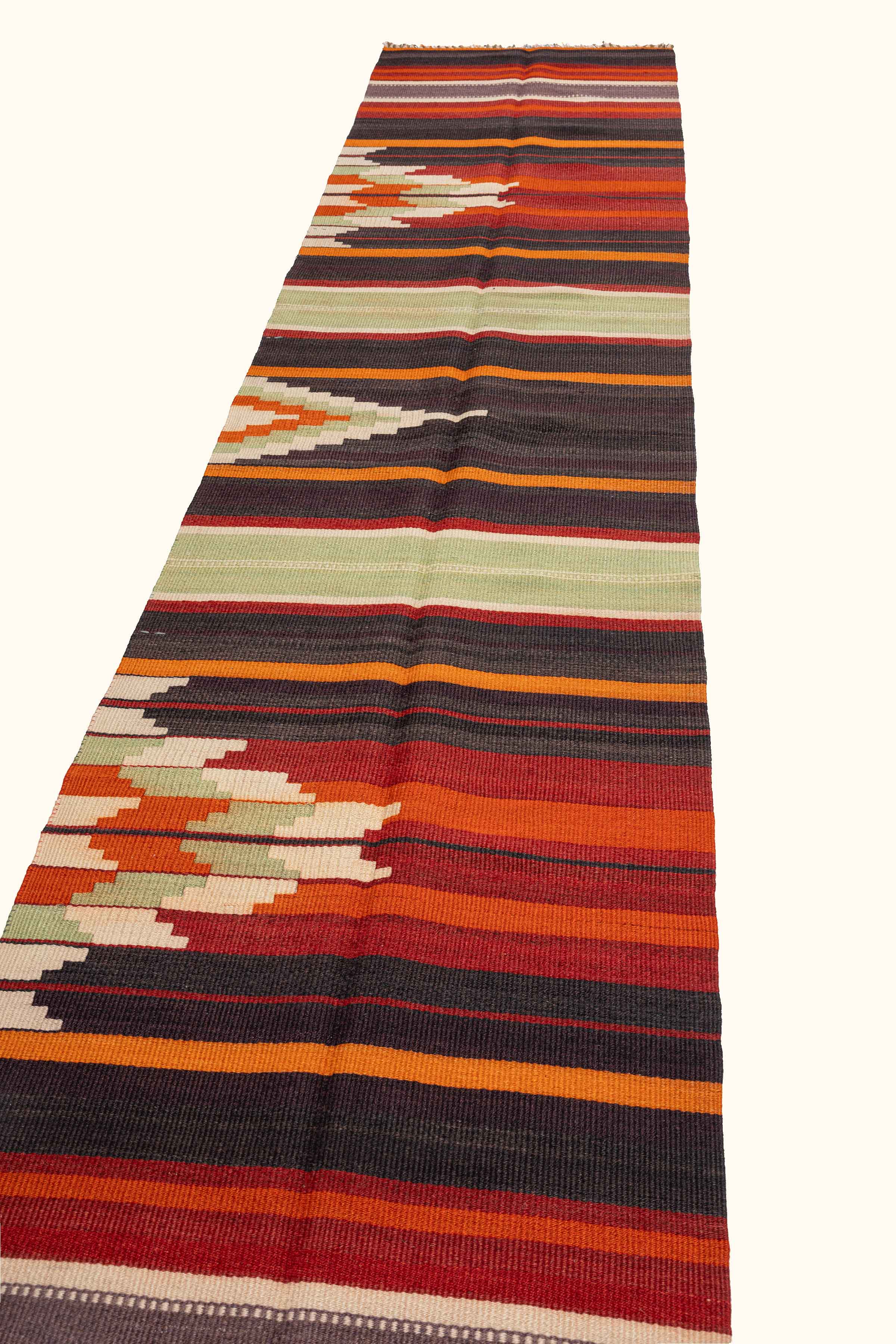
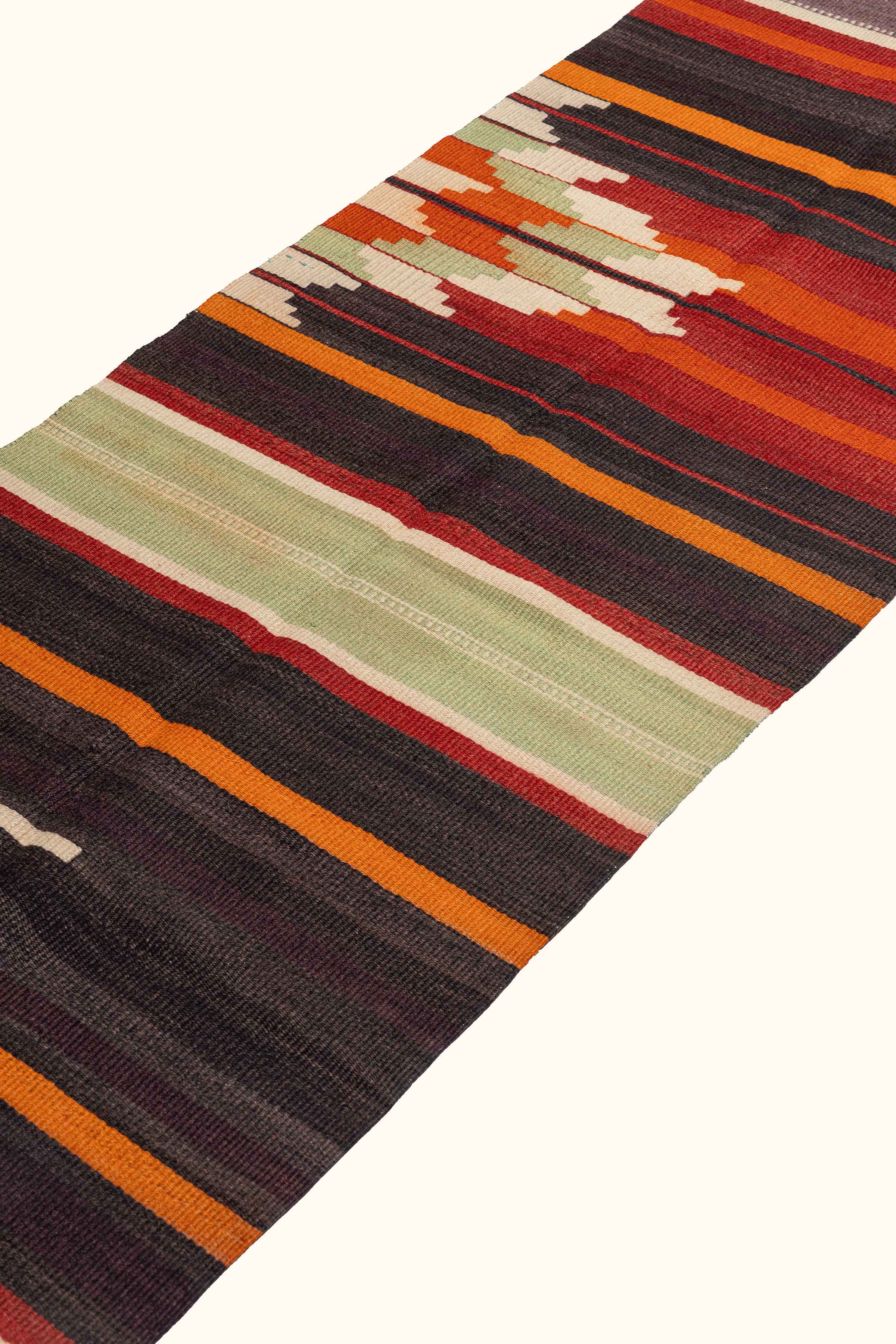
ANTEP Vintage Kilim 352x71cm
ANTEP Vintage Kilim 352x71cm
Wild Heart Free Soul
Kastanienallee 55
10119 Berlin
Germany
ANTEP Vintage Kilim from a village near Gaziantep
This handwoven vintage runner comes from a small village in the Gaziantep region. Woven on a narrow loom in the 1960s, it was created as a so-called "Tek Kanatlı"- a single wing, crafted for transitions and passageways. At 352 cm long, it appears like a woven direction-clear, protective, quietly guiding.
Symbolism in the fabric
The kilim bears two of the oldest protective symbols of Anatolia:
- Yıldız (Star): Light, orientation and inner purpose
- Göz (Eye): Protection, perception and mental clarity
These signs are not decorations – they are woven prayers.
Color tone: Deep red & garnet
The dominant tone of this kilim is an intense deep red , interspersed with nuanced garnet —like the earth at sunset, like mature wine, like warming blood. This color lends the kilim dignity, depth, and inner fire. It has a warming, centering, and protective effect-a rug with heart and weight.
For paths with meaning
Ideal for long hallways, galleries, studios, or as a link between rooms, this kilim creates direction while preserving the softness of artisanal culture.
Restored & sun-clean
Like all our pieces, this textile artwork by Wild Heart Free Soul has been carefully restored and naturally cleaned with the power of the sun, preserving its history-and keeping its vibrancy alive.
Choose options
- Vintage carpet unique - only one in stock!
- Material: 100% high-quality, hand-spun sheep's wool
- Processing: Flat-woven by hand on a traditional wooden loom
- Age: Vintage / Semi-antique. Approx. 1960s
- Condition: Vintage in mint quality due to complex cleaning and restoration process
- Origin: Antep, Anatolia
- Dimensions: 352cm x 71cm , Height : 3mm
Anatolian kilims are far more than mere textile objects – they are woven memories, personal messages, and expressions of living culture. For generations, women from nomadic tribes and villages wove their wishes, hopes, and stories into the fabric – freely, intuitively, and full of symbolic power.
This kilim, too, was woven in an Anatolian home—from the wool of the home's own sheep, sheared, washed, combed, and spun by hand. The yarns were often dyed with natural pigments such as madder, mignonette, walnut, or indigo—but from the 1950s onward, synthetic dyes increasingly found their way into the villages. The world became faster, more colorful—not every kilim remained purely plant-dyed. Many pieces from the 1960s and 1970s bear the traces of a cultural transition in their tones: between old and new, craftsmanship and modernity.
Weaving was a ritual act – accompanied by songs, stories, and silence. Often, several women sat together at the loom: mother, grandmother, sister, neighbor. Every knot, every line, every symbol carried meaning – protection, fertility, connection, power. Symbols such as the eye ( Göz ), the cosmic mother ( Elibelinde ), and the scorpion became carriers of profound messages.
They were used, loved, passed on – and some of them slept in chests for a long time until one day they came to light again.
Today, we clean and restore these pieces with the utmost respect: washed with olive soap, dried in the Antalya sun, and repaired in our Istanbul studio.
Some pieces are with us for only a few months, others stay with us for years – because we don't rush into anything. Each kilim is restored with time, care, and respect. Some wait for the right restorer, for the summer months to bathe in sunlight – for their quiet retransformation into a living work of art.
A kilim from Wild Heart Free Soul is not a product.
He is an inheritance. A woven wish.
And perhaps a companion for your home of tomorrow.
A kilim is a long-lasting companion—if treated with love and cared for carefully, it can last for many generations to come. It doesn't require extensive care, but rather the right kind.
We recommend gently vacuuming or beating the kilim once or twice a month to remove dust and dirt. Please do not use a rotary vacuum cleaner for this purpose; ideally, use a brush attachment or a gentle handheld device. Too frequent, intensive vacuuming can wear out the fibers over time.
Every few months, it's worth turning the kilim over and vacuuming the back as well. Rotating the rug slightly once a year ensures even wear and maintains the balance of the weave.
For basic cleaning, we recommend a professional hand wash every 3 to 5 years – using a pH-neutral shampoo or olive soap, gently worked in by hand, and thoroughly rinsed. Please never dry or steam clean your kilim – this will damage the fibers. If you need assistance choosing a suitable cleaner, we'd be happy to advise you. We work with experienced oriental rug specialists and are happy to share our special rates.
And if an accident does occur: Immediately dab fresh stains with a clean, dry cloth. If necessary, gently dab with a little olive soap and a slightly damp cloth – without rubbing or soaking. For stubborn stains, please consult a specialist immediately. Liquids that spread along the fibers can become permanently trapped, especially in flat weaves.
Dried food residue can usually be carefully scraped or brushed off – ideally with a steady hand and without haste.

